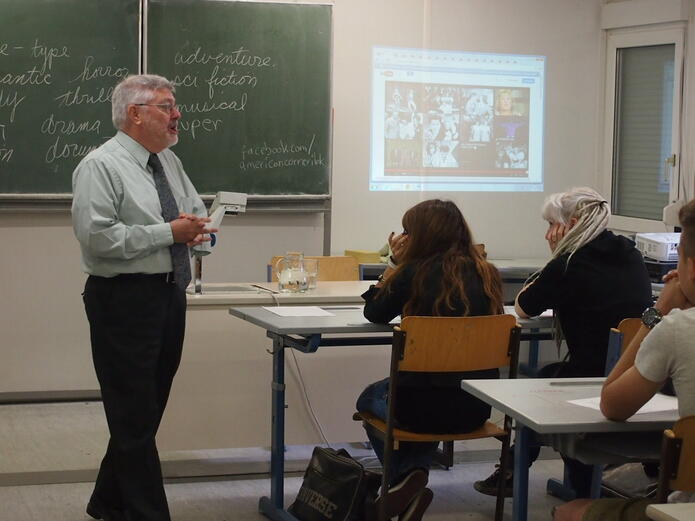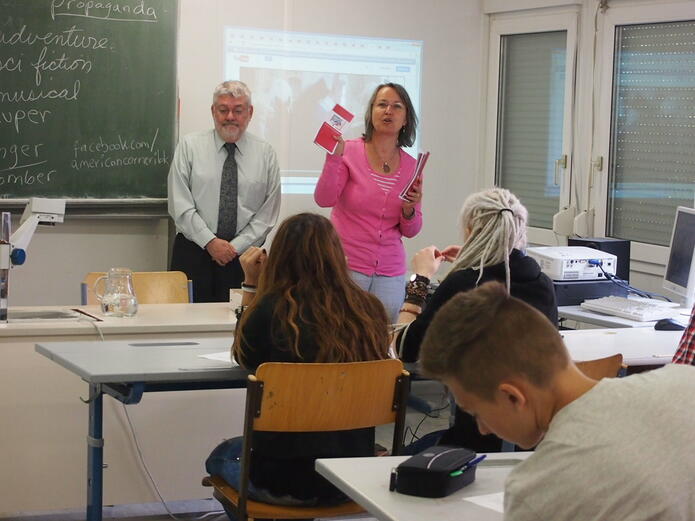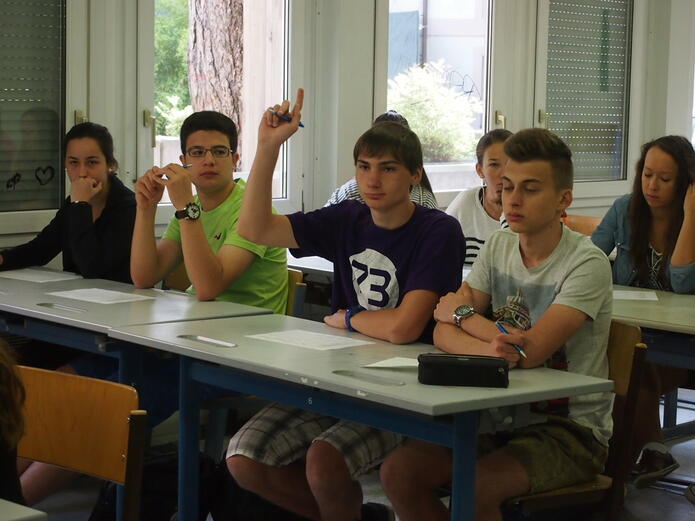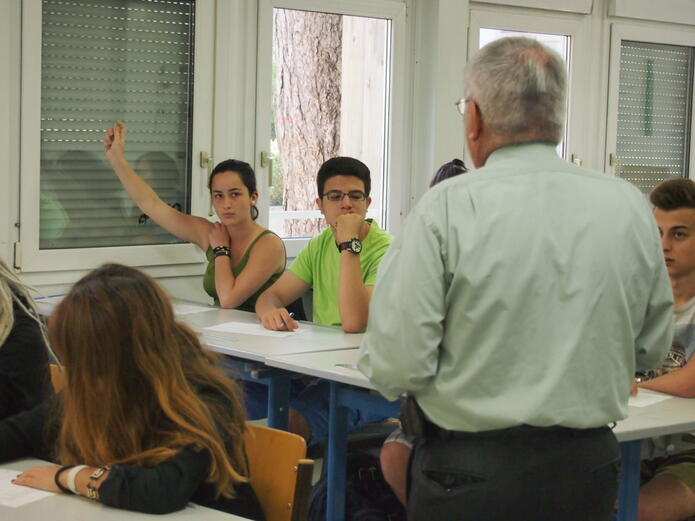American Corner Innsbruck
“History of U.S. Cinema”
Workshop with Mr. John D’Amicantonio from the U.S. Embassy Vienna
Monday, June 16, 8 am - 9.40 am
BG/BRG Sillgasse, Sillgasse 10, Innsbruck
The students of 6C at Gymnasium Sillgasse were in for a very special treat: Mr. John D’Amicantonio came all the way from the U.S. Embassy in Vienna to do a 2-lesson workshop with them on the “History of U.S. Cinema”. Over the course of the workshop, not only were the students introduced to some of the most important and successful movies that were produced in Hollywood between the 1930s and today, Mr. D’Amicantonio also pointed out what was going on in U.S. history at the time they were made.

After a quick introduction to the American Corner, the class did a brainstorming on all the kinds of movie genres they could think of, as their task was to determine the genre of each movie clip that Mr. D’Amicantonio would show them. To be able to follow the course of the workshop, they were given a worksheet where they could also make notes of the most important facts about U.S. cinema and new vocabulary. They were shown a wide range of movie clips, from the musical “Babes in Arms” (1930s) to the western classic “High Noon” (1950s) and the period drama “Amadeus” (1980s), which is set in Austria.

Starting from the individual movie clips, Mr. D’Amicantonio used both the students’ knowledge of world history and his own input to explain why some genres of movies were especially popular during certain decades. For example, he gave them an understanding of why the Great Depression of the 1930s lead to Americans favoring light-hearted genres such as the musical or why in the light of World War II, war propaganda movies were so popular in the 1940s. This way, the students were able to look at the movie clips within the broader context of U.S. history and came to realize that movies, society and politics are always closely intertwined.
The American Corner Innsbruck team hopes to be invited back to the school in the Sillgasse for more workshops and to have close ties with the teachers in future.



